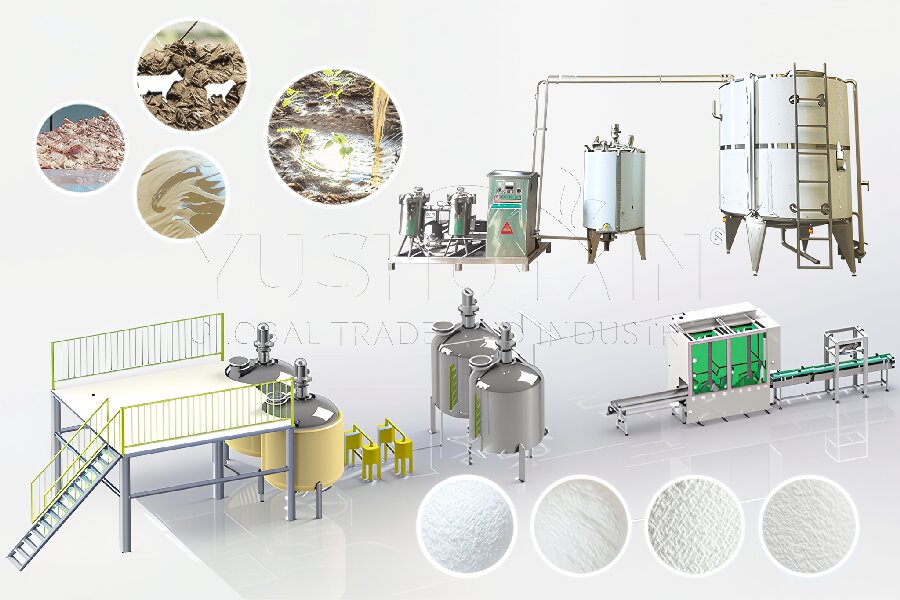The success of liquid bio fertilizer manufacturing largely depends on the quality and composition of raw materials. Whether you’re setting up a small-scale unit or expanding an industrial liquid fertilizer production line, selecting the right inputs is the foundation for producing nutrient-rich and stable biofertilizers. Let’s explore the most common raw materials, their functions, and the equipment that supports efficient production.
1. Common Organic Raw Materials
The base of liquid bio fertilizer production usually comes from organic waste sources. Materials such as cow dung, biogas slurry, plant residues, and poultry manure are rich in organic carbon and provide a balanced substrate for microbial growth. Among these, biogas slurry and cow dung are the most widely used, thanks to their high nutrient content and easy availability. These organic bases not only provide essential nutrients but also improve the soil structure and microbial diversity after application.
2. Nutrient Enrichment with NPK and Micronutrients
To enhance fertilizer efficiency, additional nutrients like nitrogen, phosphorus, and potassium are commonly blended during the production process. Trace elements such as zinc, boron, and magnesium can also be added to meet specific crop needs. A liquid fertilizer blending system equipped with an automatic batching unit ensures that these ingredients are accurately dosed and thoroughly mixed, resulting in a uniform final product.
3. Role of Microbial Strains
Microbial agents play a vital role in converting organic substrates into bioavailable nutrients. Strains such as Azotobacter, Rhizobium, and Bacillus subtilis are often used to enhance nitrogen fixation and phosphorus solubilization. In modern bio liquid fertilizer production lines, these microbial cultures are introduced during the fermentation or chelation stage using precision dosing tanks and mixing systems that protect microbial activity. Click here to know more!
4. Water Quality and Additives
Since liquid fertilizers rely heavily on water as a carrier, water quality significantly affects product stability. Using a water treatment system ensures the removal of chlorine and heavy metals that may harm beneficial microbes. Additionally, stabilizers, emulsifiers, and pH regulators are added to maintain product shelf life and compatibility with other agrochemicals.
5. Key Equipment in Liquid Bio Fertilizer Manufacturing
A professional bio liquid fertilizer manufacturing plant typically includes:
- Raw material storage tanks for organic slurry or compost extract
- Mixing and reaction tanks with stainless steel construction and internal agitators
- Microbial additive dosing units for controlled inoculation
- Filtration and sterilization systems to ensure product purity
- Filling and packaging machines for the final liquid fertilizer product
Together, these systems streamline the process from raw material handling to finished product storage, ensuring both efficiency and consistency. Welcome to consult YUSHUNXIN!

Conclusion
Developing a successful liquid bio fertilizer manufacturing process starts with understanding your raw materials and choosing reliable processing equipment. With high-quality organic inputs, effective microbial agents, and a well-designed production setup, producers can create stable, nutrient-rich biofertilizers that meet diverse agricultural needs. If you want to invest in the entire liquid biofertilizer production line, please feel free to visit: https://www.biofertilizerproduction.com/product/liquid-biofertilizer-production-technology/